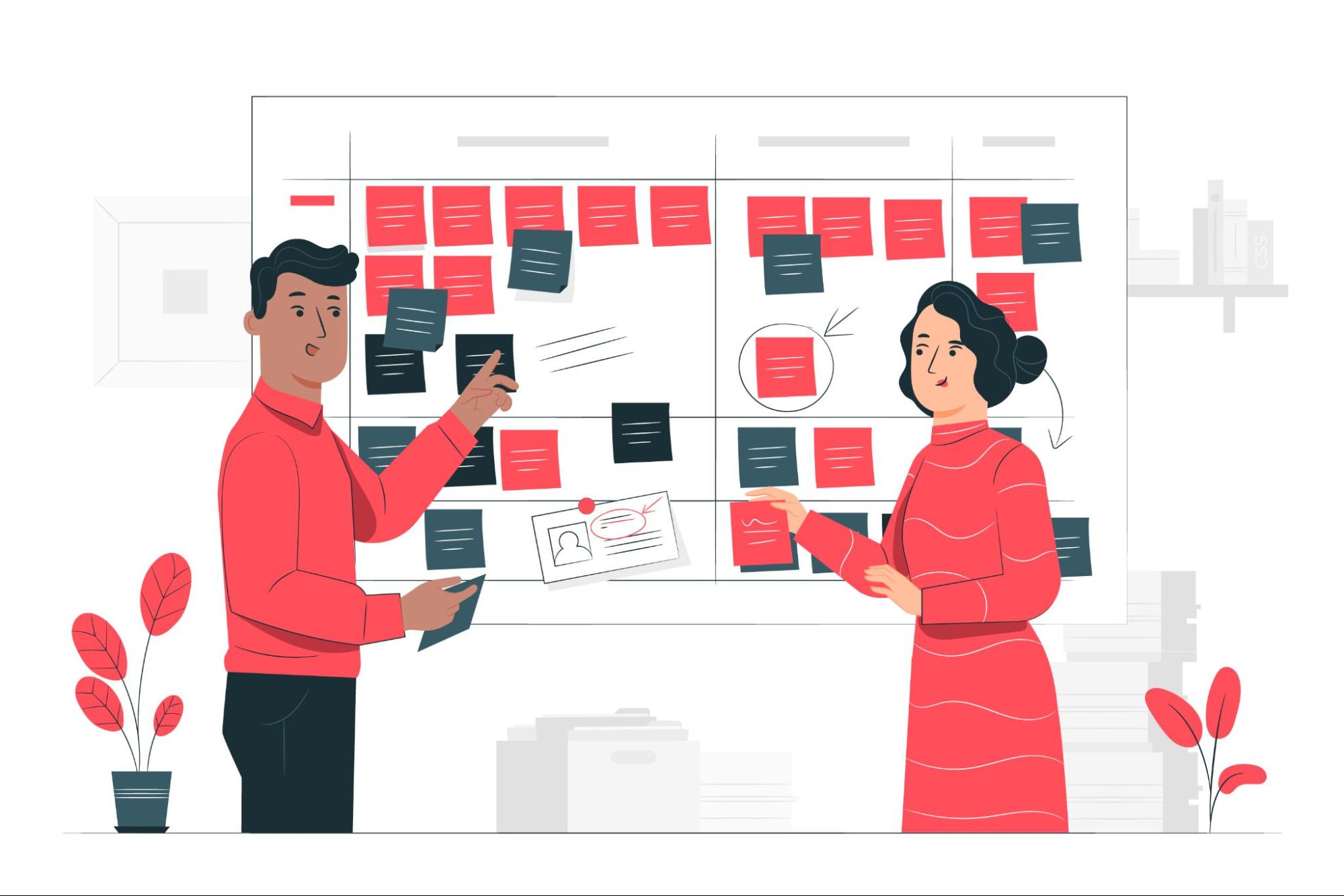Organisations are increasingly recognizing the limitations of legacy tools like IBM DOORS software. Originally designed to manage complex door requirements, IBM DOORS has struggled to keep pace with modern development methodologies and industry demands. As companies strive for greater efficiency, collaboration, and compliance in product development, the need for advanced solutions has become paramount. Read on to learn more about what IBM doors are, how it originated, what was the reason and the challenges posed by IBM DOORS, and discover how modern requirements management tools offer enhanced capabilities for today's complex environments.
What is IBM DOORS?
IBM DOORS®, known initially as Telelogic DOORS, is a well-established requirements management tool that has been a cornerstone in the field since its creation in 1991. This tool is part of the IBM Engineering Requirements Management DOORS Family and is specifically designed to facilitate the management and analysis of requirements traceability.
The Origin of IBM DOORs Software
The acronym DOORS® stands for Rational Dynamic Object Oriented Requirements System. It was developed in response to the limitations of document-based tools like Microsoft Office, which were inadequate for managing complex requirements. Over 30 years ago, the engineering industry recognized the need for specialized requirements management tools. Early solutions included:
-
QSS DOORS® (now IBM).
-
Rational Requisite Pro (now obsolete).
-
Borland Calibre RM (now Microfocus).
The Evolution of Requirements Management

As engineering projects became more complex, the demand for more advanced and user-friendly requirements management tools increased. Legacy tools, while sufficient in the past, struggled to keep pace with modern engineering needs.
The Rationale Behind Investing in IBM DOORS
Organisations initially invested in IBM DOORS® to establish a standardised doors requirements management practice. This investment was driven by the necessity to align teams around a single source of truth for requirements. The primary goals included:
-
Encouraging Common Practices: Motivating teams to adopt standardised doors requirements practices.
-
Establishing a Single Source of Truth: Ensuring all teams had access to consistent and accurate requirement information.
-
Minimizing Business Disruption: Implementing an off-the-shelf solution that allows teams to focus on their core business without significant disruptions.
-
Seamless Integration: Incorporating requirements management into core workflows without affecting existing work processes.
-
Tracking Requirements Lifecycle: Monitoring doors requirements throughout development, testing, and release stages.
Why do IBM DOORS Requirements fall short for requirements management?

The past few decades have ushered in a new way of working—teams are now expected to work more efficiently and collaboratively across the organisation and supply chain. Companies building highly regulated and complex products often rely on legacy tools such as IBM DOORS, yet as product development methodologies evolve, legacy requirements management tools have not kept pace. Misalignment between what teams need and what legacy solutions provide can introduce increased risk in the product development process, leading to inefficiencies and lack of visibility that often result in missed deadlines, defects, compliance gaps, and rework. Companies that have migrated to a modern solution from IBM DOORS have achieved faster development times, greater efficiencies, and reduced expenses. As you plan your next move, it’s essential to consider market challenges, how engineering teams are adapting, and why waiting to make a change will continue to expose you to greater unnecessary risks.
The Drawbacks of IBM DOORS Software

Your organisation may have initially implemented DOORS IBM with the aim of achieving positive business outcomes. However, as the market has evolved, so have your organisation’s needs. If you feel that you’ve outgrown your requirements management software, you are not alone. Complex systems like IBM DOORS have inherent drawbacks and struggle to keep up with innovation in highly regulated industries. Continuing to use a solution that no longer meets your needs brings several challenges:
Cumbersome User Experience
IBM DOORS features a complex architecture and an outdated user interface, making it difficult for users to navigate. Existing users are losing motivation, and new users are reluctant to learn the system. Many users end up resorting to Word and Excel, while collaboration happens in meetings and emails, leaving essential decisions and details outside of DOORS.
Lack of Robust Collaboration
With stakeholders hesitant to use DOORS, “librarians” are often required to manually update the system, while real collaboration takes place in emails or conversations. This leads to a lack of robust reviews and a deficient audit trail for requirements evolution. Additionally, maintaining dedicated staff to manage DOORS adds unnecessary costs, especially in today’s competitive market.
Aging Technologies and Increased Risk
DOORS 9.6 is already outside its original support window, raising concerns about the platform’s future. Eventually, IBM will discontinue support for this legacy system, putting customers at risk of losing their intellectual property. Furthermore, the absence of a cloud option complicates remote work.
High Cost of Ownership and Customization
Organisations often struggle to realize the promised benefits of DOORS IBM without extensive customization, which can interfere with focusing on core business objectives. Moreover, customizations made for DOORS do not transfer to IBM DOORS Next, adding to the complexity and cost.
Stagnant Infrastructure
While DOORS may function well at rest, they do not support the constant changes in the IT industry. Ignoring these changes introduces additional risks, and supporting DOORS' outdated architecture is becoming increasingly difficult as regulations become more demanding.
Lack of Compliance Frameworks
Industries are imposing stricter regulatory and compliance rules, and new engineering frameworks are being established (e.g., DO178 A, B & C). Legacy requirements tools like DOORS have not kept pace with these changes, leaving users to create their own frameworks.
Risks and Costs Associated with Staying with IBM DOORS Software
Using tools that are difficult or frustrating to operate and that require experts to manage can slow down development, breed resistance, and hinder adoption. This is particularly true for IBM DOORS software. Such tools create fragmented processes that introduce unnecessary risks for organisations striving to stay compliant while developing integrated, complex products to sustain their business and maintain market relevance.
Unintended Consequences of Fragmented Processes
A fragmented development process can critically impact functions such as requirements traceability, verification, validation, risk mitigation, product integration, and compliance. This often leads to information gaps, defects, delays, rework, recalls, missed requirements, and significant manual effort.
Negative Outcomes in the Product Life Cycle
When using IBM DOORS software, organisations developing complex products, systems, and software can experience several adverse outcomes, including:
-
Performance Issues: Products fail to perform specific functions.
-
Quality Problems: Defects are discovered by customers post-launch.
-
Delays: Product release deadlines are missed or costs overrun.
-
Failure to Meet Requirements: Products do not meet customer needs.
-
Compliance Gaps: Gaps are identified late, requiring costly rework.
-
Regulatory Actions: Products may not be approved for launch or might be recalled post-launch.
To avoid these risks and costs, organisations need a modern doors requirements management solution that supports efficient, compliant, and integrated product development processes.
Are you interested in making a change in your requirements management tool? Optimizory offers innovative solutions like RMsis and Links Explorer that are designed to meet the demands of today’s complex product development processes. RMsis provides comprehensive requirements management, streamlining traceability, enhancing collaboration, and ensuring compliance. Links Explorer complements this by offering powerful integration and traceability features, allowing you to visualize connections, improve decision-making, and maintain a single source of truth. Optimizory's solutions help you achieve faster development times, greater efficiency, and reduced costs, making them a helping hand. Upgrade to Optimizory and experience the benefits of modern requirements management solutions built for today's complex environments. For more information, visit Optimizory.




